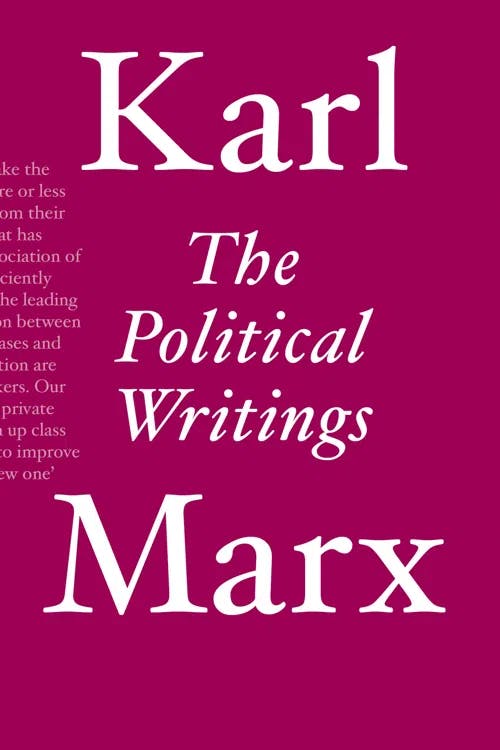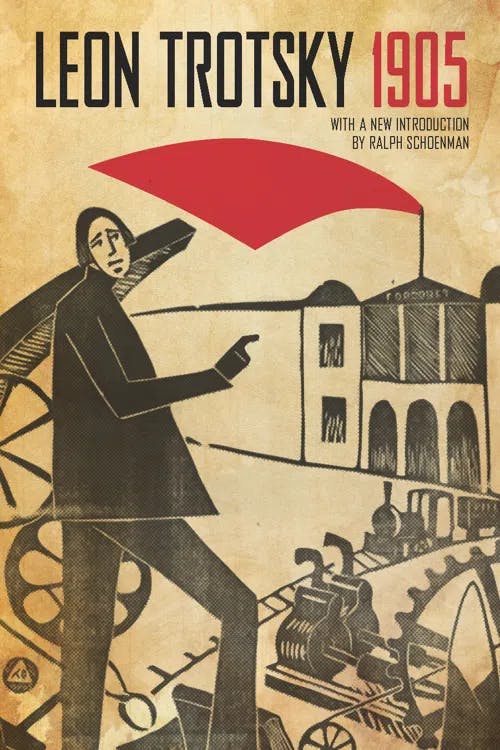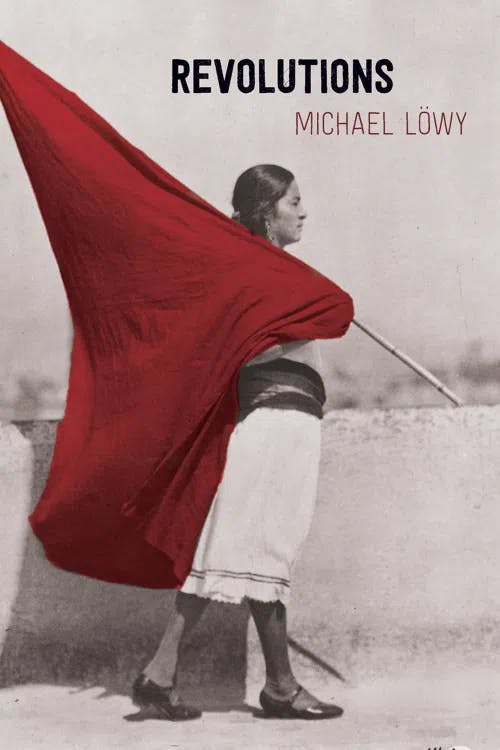What is Permanent Revolution?
MA, Sociology (Freie Universität Berlin)
Date Published: 15.01.2024,
Last Updated: 02.04.2024
Share this article
Defining permanent revolution
A concept most closely associated with Leon Trotsky, permanent revolution refers to his theory that “economically backward” societies can achieve democratic and socialist objectives in a single, continuous, and uninterrupted revolutionary process led by the proletariat. This idea runs contrary to traditional Marxism, which argues that the revolution must take place in two stages: first, a bourgeois-democratic revolution, representing a break from feudalism and second, a proletarian revolution, which would overthrow the capitalist ruling classes and bring about socialism. Rather, Trotsky argues in The Permanent Revolution that
The democratic revolution grows over directly into the socialist revolution and thereby becomes a permanent revolution. […] Therein lies the permanent character of the socialist revolution as such, regardless of whether it is a backward country that is involved, which only yesterday accomplished its democratic revolution, or an old capitalist country which already has behind it a long epoch of democracy and parliamentarism. (1931)
In other words, Trotsky believed that the only way for a socialist revolution to be successful was to bypass an intermediate phase of capitalism and bourgeois rule. This was significant because many other socialist and communist figures of the day – namely, in Bolshevik Russia – held a more determinist and orthodox view of Marxism.
In addition, Trotsky believed that the proletarian revolution must be international, as no single socialist state could withstand the external pressures of a capitalist global economy.
To understand the importance of this theory, we must first explore the foundational ideas of Marxism to which he was responding. As we will explore in this study guide, Trotsky’s break from orthodoxy through his theory of permanent revolution was quite controversial. It put him at odds with the leader of the Soviet Union, Joseph Stalin who advocated for state-sponsored industrialization as part of the transition towards socialism, a dispute that would have grave consequences for Trotsky. In addition, we will expand on the main tenets of his theory and reflect on some of the revolutionary socialist movements that lend credence to his ideas.
Origins and history
Karl Marx and Friedrich Engels
Before we can move on to discuss Trotsky's theory of permanent revolution, we must first begin with the works of Marx and Engels, which serve as the foundations on which his ideas were built. Marx and Engels were historical materialists, which meant that they believed societies were defined by their relations of production and that conflicts between classes were the engines that drove historical progress. As they put it in The Communist Manifesto,
The history of all hitherto existing society is the history of class struggles. Freeman and slave, patrician and plebeian, lord and serf, guildmaster and journeyman, in a word, oppressor and oppressed, stood in constant opposition to one another, carried on an uninterrupted, now hidden, now open fight, that each time ended, either in the revolutionary reconstitution of society at large, or in the common ruin of the contending classes. (Marx and Engels, 1847, [2014])
Karl Marx and Friedrich Engels
The history of all hitherto existing society is the history of class struggles. Freeman and slave, patrician and plebeian, lord and serf, guildmaster and journeyman, in a word, oppressor and oppressed, stood in constant opposition to one another, carried on an uninterrupted, now hidden, now open fight, that each time ended, either in the revolutionary reconstitution of society at large, or in the common ruin of the contending classes. (Marx and Engels, 1847, [2014])
As societies began to industrialize, they observed a shift away from feudal relations of production. The emergent ruling class — which they called the bourgeoisie — served an important historical function for Marx and Engels:
All property relations in the past have continually been subject to historical change consequent upon the change in historical conditions. The French Revolution, for example, abolished feudal property in favour of bourgeois property. The distinguishing feature of Communism is not the abolition of property generally, but the abolition of bourgeois property. But modern bourgeois private property is the final and most complete expression of the system of producing and appropriating products, that is based on class antagonisms, on the exploitation of the many by the few. (1847, [2014])
Largely inspired by what they witnessed happen in the French Revolution, they believed that the bourgeois would actually carry out an important step on the way to socialism by facilitating a transition from feudalism and bringing and helping develop a democratic political system. They also theorized that achieving socialism must come through the antagonisms that would play out between the bourgeoisie and the emergent proletariat under capitalism.
It is also important to note that Marx and Engels were the ones who first coined the term “permanent revolution.” Most famously, they included it in their 1850 “Address of the Central Committee to the Communist League.” Here, Marx and Engels offer some hint into where Trotsky would take the term, by reflecting on the challenge of pushing the revolutionary process further past that stage of bourgeois democratic rule,
While the democratic petty bourgeois want to bring the revolution to an end as quickly as possible, [...] it is our interest and our task to make the revolution permanent until all the more or less propertied classes have been driven from their ruling positions, until the proletariat has conquered state power and until the association of the proletarians has progressed sufficiently far (Marx and Engels, in The Political Writings, 1850, [2019])
Karl Marx
While the democratic petty bourgeois want to bring the revolution to an end as quickly as possible, [...] it is our interest and our task to make the revolution permanent until all the more or less propertied classes have been driven from their ruling positions, until the proletariat has conquered state power and until the association of the proletarians has progressed sufficiently far (Marx and Engels, in The Political Writings, 1850, [2019])
These ideas were foundational to the work of Leon Trotsky and his development of permanent revolution, but to understand them fully we have to turn to the context in which he was writing: the Russian Revolution at the beginning of the 20th century.
Leon Trotsky
To fully contextualize Trotsky’s ideas and where they came from, it’s also useful to start with a brief overview of who he was. Leon Trotsky was born in 1879 in feudal, Czarist Russia. He was a key military commander of the Bolshevik Red Army and a leading figure in the Russian Revolution. As with most other Bolshevik revolutionaries, he was very much inspired in his thinking by the works of Marx and Engels, so it follows that he would engage with and further expand upon some of their ideas.
Yet, unlike Marx and Engels, Trotsky believed that any “democracy” that was developed by the ruling classes would ultimately only suit their interests. Instead, he called upon the working classes themselves to form alliances with the peasants — who made up the majority of the Russian population — to carry out democratic tasks and socialist struggle simultaneously. For him, this was the only way to ensure a successful revolution that wouldn’t be corrupted by the interests of the elites. Let’s take a closer look at the specific tenets of Trotsky’s theory of permanent revolution.
Tenets of Trotsky’s theory of permanent revolution
As articulated by Kunal Chattopadhyay and Paul Le Blanc in their introduction to Leon Trotsky: Writings in Exile, the components of Trotsky’s theory of permanent revolution can be summarized as follows:
Three elements can be found in Trotsky's theory: (a) the possibility and necessity under the right circumstances, of democratic and immediate struggles spilling over into the struggle for working-class political power, (b) culminating in a transitional period going in the direction of socialism, (c) which can be realised only through the advance of similar struggles around the world. (2012)
Edited by Kunal Chattopadhyay and Paul Le Blanc
Three elements can be found in Trotsky's theory: (a) the possibility and necessity under the right circumstances, of democratic and immediate struggles spilling over into the struggle for working-class political power, (b) culminating in a transitional period going in the direction of socialism, (c) which can be realised only through the advance of similar struggles around the world. (2012)
To make these elements of theory into reality, Trotsky argued that revolutionaries must acknowledge the limits of the bourgeoisie to bring about democracy. Rather, it is only through alliances between the organized working class and peasants that democracy and socialism can be realized. Furthermore, he believed it to be imperative that democracy and socialism are fought for in tandem rather than as two separate goals — and these revolutionary struggles must take place on an international scale. Below, we’ll delve deeper into his reasoning.
Limits of the bourgeoisie
In contrast to the two-stage theory, Trotsky challenged the idea that socialist revolution is an imminent conclusion of capitalism. He did not feel that the phase of bourgeois democratic rule under capitalism would do the working classes any favors. If we look at the crises facing liberal democracies of today — from democratic deficits to corporate lobbies and businesses being too big to fail — we can get a sense of what he meant. One can easily see that socialism is far from an inevitable consequence of bourgeois rule.
In Trotsky’s mind, therefore, the proletariat must bypass the phase of bourgeois democratic rule and instead pursue democratic and socialist objectives simultaneously. As recounted in his work 1905 (published in 1907), Trotsky wrote of “those views which came to be called the theory of ‘permanent revolution’”:
This rather high-flown expression defines the thought that the Russian revolution, although directly concerned with bourgeois aims, could not stop short at those aims; the revolution could not solve its immediate bourgeois tasks except by putting the proletariat into power. And the proletariat, once having power in its hands, would not be able to remain confined within the bourgeois framework of the revolution. On the contrary, precisely in order to guarantee its victory, the proletarian vanguard in the very earliest stages of its rule would have to make extremely deep inroads not only into feudal but also into bourgeois property relations. (1907, [2017])
Leon Trotsky
This rather high-flown expression defines the thought that the Russian revolution, although directly concerned with bourgeois aims, could not stop short at those aims; the revolution could not solve its immediate bourgeois tasks except by putting the proletariat into power. And the proletariat, once having power in its hands, would not be able to remain confined within the bourgeois framework of the revolution. On the contrary, precisely in order to guarantee its victory, the proletarian vanguard in the very earliest stages of its rule would have to make extremely deep inroads not only into feudal but also into bourgeois property relations. (1907, [2017])
He argued that bourgeois democracy was ultimately only set up to serve the interests of the ruling classes and its institutions would not translate into any useful foundation for socialist democracy that centered on the interests of the proletariat. Instead, he emphasized that the democratic struggle must be carried out through alliances between the organized working class and the peasant masses, and must ultimately be anti-imperialist and international in scope.
Revolutionary agents
Trotsky looked to the proletariat as the only agent who could truly bring about both direct-democratic structures and a socialist revolution — thus bypassing the need for an intermediary phase of bourgeois capitalist rule. Drawing inspiration for his theory from the semi-feudal Russian context, he observed that the industrial working class was only a small fraction of the population, with the vast majority still consisting of peasant farmers and artisans. He believed that in “economically backward countries” where industrialization had yet to take place, the proletariat must consist of alliances between this emergent working class and the peasants. As Trotsky asserts in his speech “In Defense of October” (1932, referencing comments made in the year 1905),
The destiny of the most elementary revolutionary interest of the peasantry … is bound up with the destiny of the whole revolution, that is, with the destiny of the proletariat. The proletariat, once arrived at power, will appear before the peasantry as the liberating class. (Trotsky, in Leon Trotsky: Writings in Exile, 2012)
This theorization was significant because it challenged the Marxian determinism that all countries must follow the same trajectory as the West in order to reach socialism. This not only excluded many countries in the global South that had not yet undergone industrialization and were in many cases plagued by imperialism. Trotsky’s theory created the space of possibility for socialist revolution to become attainable at a more international scale.
Internationalism
Trotsky also believed that socialism must be international in scope and that a single state cannot succeed or maintain itself under a predominantly capitalist world system. A budding socialist state would simply be under too much external pressure to succeed in the long term, and it would lack access to global networks of trade. Therefore, he believed that multiple socialist revolutions must take place in tandem across international borders. In turn, the proletariat should not conceive of itself within the confines of the nation-state but strive for global solidarity as a central pillar to achieving its revolutionary objectives. In his work 1905 Trotsky states,
The contradictions between a workers’ government and an overwhelming majority of peasants in a backward country could be resolved only on an international scale in the arena of a world proletarian revolution. Having, by virtue of historical necessity, burst the narrow bourgeois-democratic confines of the Russian revolution, the victorious proletariat would be compelled also to burst its national and state confines, that is to say, it would have to strive consciously for the Russian revolution to become the prologue to a world revolution. (1907, [2017])
This very much ran contrary to Stalin’s idea of “socialism in one country,” defined by planned, industrialization projects and centralized state-oriented socialism. Rather, Trotsky championed the concept of “uneven and combined development,” which maintained that the trajectories of different nation-states were deeply intertwined (1907, [2017]). This had significance for countries outside of Europe and Russia who were struggling under colonialism within the global capitalist system.
Permanent revolution: three key examples
The Russian Revolution (1905-1907;1917)
Trotsky developed his theory about the permanent revolution based on his own experiences fighting for socialism in his Russian homeland. It is also the case, however, that his ideas of the permanent revolution were very much at odds with his contemporaries, such as Joseph Stalin — all of which came to a head after the death of Vladimir Lenin and the power struggle that followed. In Leon Trotsky, Joshua Rubenstein explains how Trotsky’s ideas were received,
It was Trotsky who advocated permanent revolution, as if the Soviet Union could not stand on its own feet without the assistance of outside forces. By denying the possibility of building socialism in one country, Trotsky appeared to question the capacity of the Soviet proletariat. ‘Socialism in one country’ became a patriotic rallying cry, while the call for ‘permanent revolution’ was turned into a radical and irresponsible act of adventurism. In the eyes of the party, Trotsky appeared trapped by a hopelessly optimistic belief in revolution. The country wanted peace; Trotsky offered glory. (2011)
Joshua Rubenstein
It was Trotsky who advocated permanent revolution, as if the Soviet Union could not stand on its own feet without the assistance of outside forces. By denying the possibility of building socialism in one country, Trotsky appeared to question the capacity of the Soviet proletariat. ‘Socialism in one country’ became a patriotic rallying cry, while the call for ‘permanent revolution’ was turned into a radical and irresponsible act of adventurism. In the eyes of the party, Trotsky appeared trapped by a hopelessly optimistic belief in revolution. The country wanted peace; Trotsky offered glory. (2011)
In addition to his strong stance that any successful socialist project must be international in scope, he also did not trust the idea of placating or allying with the more reformist Mensheviks who wanted to take a softer approach with the Russian aristocracy in alignment with Marx’s two-stage revolution theory. These differences in outlook and strategy led to a schism with Stalin following Lenin’s death in 1924. Shortly thereafter, Trotsky was expelled from the party, exiled in 1928, and later assassinated under Stalin’s orders in 1940.
The Chinese Revolution (1927-1949)
The rise of communism in China was an important case for the development of Trotsky’s theory of permanent revolution. In its early stages, Trotsky observed certain dimensions of his theory in action, namely because China was a feudal society composed largely of peasants with a relatively small industrialized working class. He theorized that it did not make much sense to follow a two-stage revolutionary process over mobilizing a proletariat based on alliances between the peasant masses and the working class. As Chinese communism progressed, however, it began to split from the path of permanent revolution. Mao Zedong, leader of the Chinese Communist Party, was initially intent on overthrowing the Japanese imperialist rule first and foremost — attempting to build uneasy alliances with the nationalist bourgeoisie — thus, favoring a phase of democratic struggle before socialism.
These alliances ultimately found the Chinese Communist Party in bitter disputes with the nationalists. Specifically, what followed was the violent suppression of the Chinese Communist Party through the Shanghai massacre in 1927 and the outbreak of civil war with Chinese Nationalists, which would last for more than two more decades. As Trotsky writes in “The Chinese Revolution” (1938),
The politics of the Communist International in China showed convincingly what the Russian Revolution would have been converted into if the Mensheviks and the Social Revolutionaries had not been thrust aside in time by the Bolsheviks. In China the conception of the permanent revolution was confirmed once more, this time not in the form of a victory, but of a catastrophe. (Trotsky, in Leon Trotsky: Writings in Exile, 2012)
This context was still instructive for Trotsky because he was able to take a critical stance on the example of China in terms of the disastrous consequences it faced for attempting to implement a two-stage revolutionary process. In many ways, it proved not only the possibility of permanent revolution — but the necessity of it.
The Cuban Revolution (1959)
Another pertinent example of Trotsky’s theory in practice in the case of Cuba. In 1959, the petty-bourgeois (albeit Marxist) movement — led by a group of intellectuals known as the July 26th Movement (M26) — overthrew the Batista regime, a puppet for US imperialism. Initially, this was their sole objective, but the masses pushed the revolutionary initiative further than toppling the government. As Michael Löwy recounts it in Revolutions,
In the revolutionary atmosphere of these first months, there were strikes in foreign businesses, especially those with tight links to the dictatorship, during which the workers sometimes demanded their expropriation. The same occurred in the countryside, where agrarian conflicts broke out on the large sugar plantations. [...] Soon, cane fields were burned. In Havana, these tensions prompted the first ministerial crisis and, in July, the exit of the moderate Cuban president Manuel Urrutia Lléo. [...] The country was now checkered with familiar silhouettes, both masculine and feminine, dressed in blue shirts and drab olive pants, berets fitted squarely, rifles slung over shoulders, guarding workplaces and neighborhoods. (2020)
Michael Löwy
In the revolutionary atmosphere of these first months, there were strikes in foreign businesses, especially those with tight links to the dictatorship, during which the workers sometimes demanded their expropriation. The same occurred in the countryside, where agrarian conflicts broke out on the large sugar plantations. [...] Soon, cane fields were burned. In Havana, these tensions prompted the first ministerial crisis and, in July, the exit of the moderate Cuban president Manuel Urrutia Lléo. [...] The country was now checkered with familiar silhouettes, both masculine and feminine, dressed in blue shirts and drab olive pants, berets fitted squarely, rifles slung over shoulders, guarding workplaces and neighborhoods. (2020)
Thus, the revolution was not only anti-imperial in nature. The case of the Cuban Revolution represents the continuous and uninterrupted character of permanent revolution, withstanding immense external pressure through sanctions, and making significant accomplishments in the realms of education and healthcare for its citizens. Still, Cuba is one isolated island rather than an international social movement, meaning it has not completely fulfilled the objectives of the permanent revolution.
Closing thoughts
To recap the significance of the theory of permanent revolution, let’s conclude with the following passage, written by Kunal Chattopadhyay and Paul Le Blanc:
In the theory of permanent revolution, we see the dynamic interplay of democracy and class struggle, the self-activity of the masses of labouring and oppressed people reaching for their own liberation within, while at the same time straining beyond, the context of global capitalism. (Leon Trotsky: Writings in Exile, 2012)
In sum, the theory of permanent revolution came in contrast to the Marxian idea of a two-stage revolution. Although they led to his expulsion from Stalinist Russia and eventual assassination, Trotsky’s ideas proved prolific.
Trotsky’s ideas were proven in the negative in the case of Chinese communism, which fell into calamity when it failed to take the direction of a continual and uninterrupted revolution led by a united proletariat. The Cuban revolution was closer to achieving Trotsky’s ideal, as the masses pushed for the realization of socialist objectives following the democratic struggles, which manifested in the overthrow of the Bautista regime. It, too, ultimately fell short as it never galvanized a wider, international socialist revolution.
From Russia to China to Cuba, no society has yet to reach the full expression of permanent revolution. Still, the concept has opened up the field of possibility for striving toward a socialist horizon, and it continues to inspire activists and scholars the world over. Today, his work remains salient, and historians like Michael Löwy use it to evaluate and reflect on revolutionary socialist projects. In this way and more, Trotskyism still represents a significant current in revolutionary socialist theory and activism around the world.
Further reading on Perlego
A People's History of the Russian Revolution (2017) by Neil Faulkner
The Marxism of Che Guevara: Philosophy, Economics, Revolutionary Warfare (2023) by Michael Löwy
Introduction to Marxist Theory (2021) by Ernest Mandel
Trotsky, Trotskyism and the Transition to Socialism (2005) by Ian D. Thatcher
The Essential Trotsky (Routledge Revivals)(2014) by Leon Trotsky
What is the theory of permanent revolution in simple terms?
What is an example of permanent revolution?
Who are the figures associated with permanent revolution?
Bibliography
Chattopadhyay, K., and Le Blanc, P. (eds.) (2012) Leon Trotsky: Writings in Exile. Pluto Press. Available at: https://www.perlego.com/book/665111/leon-trotsky-writings-in-exile-pdf
Löwy, M. (2020) Revolutions. Haymarket Books. Available at: https://www.perlego.com/book/1377416/revolutions-pdf
Marx, K., and Engels, F. (2014) The Communist Manifesto. HarperTorch. Available at: https://www.perlego.com/book/602671/the-communist-manifesto-pdf
Marx, K., and Engels, F. (2019) “Address of the Central Committee to the Communist League,” in Political Writings: Karl Marx. Verso. Available at:
https://www.perlego.com/book/1097543/the-political-writings
Rubenstein, J. (2011) Leon Trotsky: A Revolutionary’s Life. Yale University Press. Available at: https://www.perlego.com/book/1089849/leon-trotsky-a-revolutionarys-life-pdf
Trotsky, L. (2012) “The Chinese Revolution,” in Chattopadhyay, K., and Le Blanc, P. (eds.) Leon Trotsky: Writings in Exile. Pluto Press. Available at: https://www.perlego.com/book/665111/leon-trotsky-writings-in-exile-pdf
Trotsky, L. (2012) “In Defense of October,” in Chattopadhyay, K., and Le Blanc, P. (eds.) Leon Trotsky: Writings in Exile. Pluto Press. Available at: https://www.perlego.com/book/665111/leon-trotsky-writings-in-exile-pdf
Trotsky, L. (1931) The Permanent Revolution. Progress Publishers.
Trotsky, L. (2017) 1905. Haymarket Books. Available at: https://www.perlego.com/book/566590/1905-pdf
MA, Sociology (Freie Universität Berlin)
Lily Cichanowicz has a master's degree in Sociology from Freie Universität Berlin and a dual bachelor's degree from Cornell University in Sociology and International Development. Her research interests include political economy, labor, and social movements. Her master's thesis focused on the labor shortages in the food service industry following the Covid-19 pandemic.






